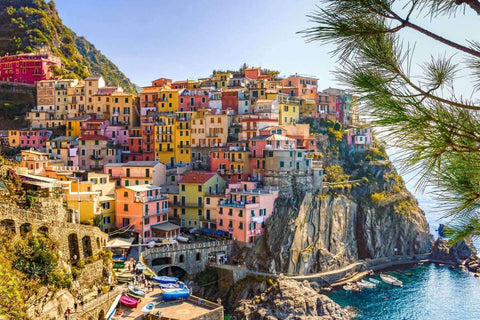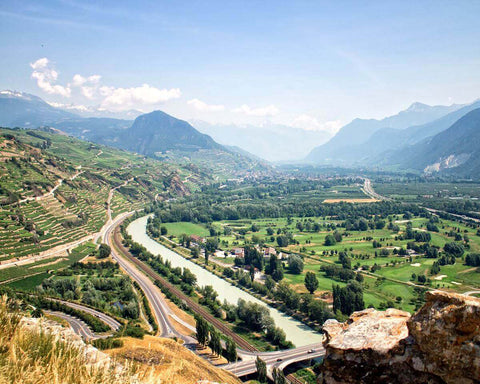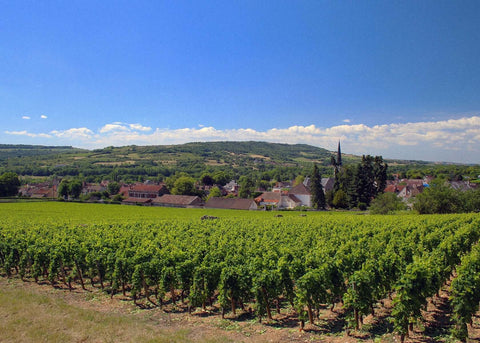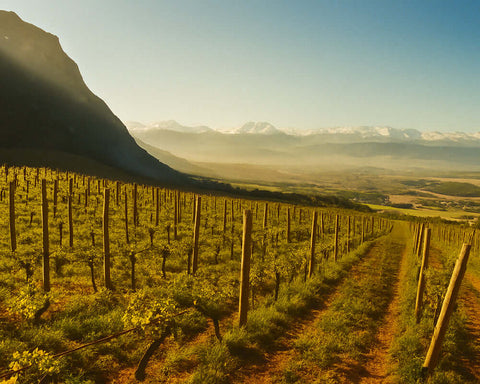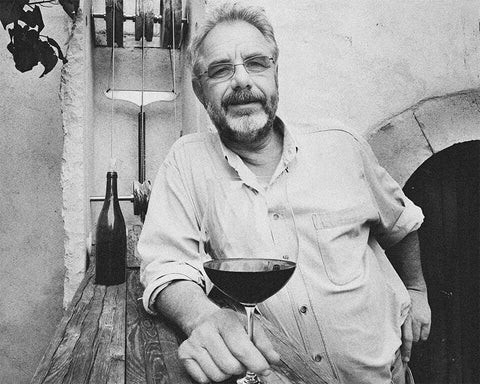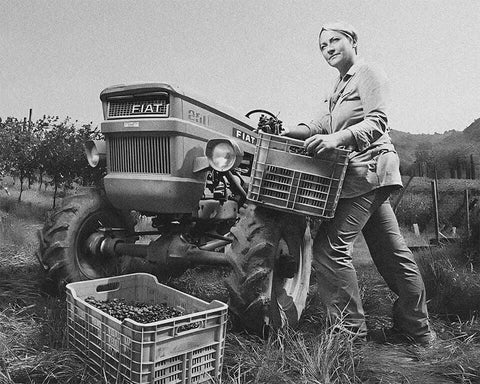Regarded as the birthplace of the Italian Renaissance and beloved for its picturesque villages, cypress-lined country roads, and bountiful vineyards, Tuscany (Toscana) is the most famous wine region in all of Italy. Bordering Tuscany to the north is Liguria and Emilia-Romagna, to the east is Umbria and Marche Lazio is situated to the south.
Winemaking practices in Tuscany date back to 8th Century BC when the Etruscans called the region home. In 1710, the first flask of Tuscan wine crossed the border, putting Sangiovese grapes and the famous Chianti wine on the map. For many years following, Chianti wine, a massive export of Tuscany to this day, was met with attention and praise. However, the production of this wine was greatly impacted by the devastation of vineyards during WWII and many Tuscan winemakers struggled as a result.
Since then, however, Tuscany has produced some of the most reputable wines on the planet and is one of the most prolific wine regions in all of Europe. There are over 157,000 acres of vineyards spread across Tuscany that collectively produce around 7.3 million ounces of wine every year. Tuscany is divided into 10 provinces: Firenze, Arezzo, Grosseto, Livorno, Lucca, Massa-Carrara, Pisa, Pistoia, Prato, and Siena. Each region is distinct from the others despite their proximity to one another.
Tuscan wines are more than just beverages; they are a testament to the region's cultural identity, embodying centuries of winemaking expertise and the unique terroir of the Tuscan hills. Tuscan wines offer a journey through Italy's enological excellence from the world-famous Chianti to the prestigious Brunello di Montalcino.
Table of Contents
History of Tuscany
Tuscany's winemaking history stretches back over 3,000 years to the time of the Etruscans, who were already cultivating vines and producing wine before the Romans arrived. The Romans further developed viticulture in the region, recognizing the area's potential for quality wine production.
Throughout the Middle Ages and Renaissance, Tuscan wines gained prominence, with monasteries crucial in maintaining and improving winemaking techniques. The Medici family, rulers of Florence, were particularly influential in promoting Tuscan wines, helping to establish their reputation beyond Italy's borders.
The 19th century saw significant changes in Tuscan viticulture, including the development of the Chianti recipe by Baron Bettino Ricasoli. This blend, primarily based on Sangiovese, would become the foundation for many of Tuscany's renowned red wines.
In the 20th century, Tuscany experienced a wine revolution. The creation of Super Tuscans in the 1970s challenged traditional winemaking rules and elevated Tuscan wines to world-class status. These innovative wines, often incorporating international grape varieties, paved the way for modernizing Tuscan winemaking while maintaining a deep respect for tradition.
Terroir of Tuscany
Tuscany's terroir is characterized by its varied landscape, from coastal areas to inland hills and mountains. The region enjoys a Mediterranean climate with hot, dry summers and mild winters, which is ideal for grape cultivation.
The hilly terrain of central Tuscany, particularly in areas like Chianti and Montalcino, provides excellent exposure for vineyards and ensures proper drainage. Soil composition varies across the region, ranging from galestro (a rocky, schistous clay soil) in Chianti to the sandstone and calcareous clay of Montalcino.
This diverse terroir allows cultivating various grape varieties, each expressing unique characteristics depending on its specific growing location within Tuscany.
The Geology of Tuscany
Tuscany's landscape predominantly comprises rolling hills, with elevations ranging from sea level to the heights of the Apennine Mountains. The region is divided into several sub-regions, each with unique geological characteristics. The primary wine-producing areas include Chianti, Montalcino, and Montepulciano, each contributing distinct terroir profiles.
- Chianti: Known for its mix of clay and limestone soils, Chianti provides excellent drainage, which is essential for growing high-quality Sangiovese grapes. The region's significant diurnal temperature variation benefits grape ripening.
- Montalcino: Characterized by galestro and clay soils, Montalcino is ideal for the Sangiovese Grosso variety, producing robust and age-worthy wines.
- Montepulciano: This area features a mix of clay, sand, and silt soils. Montepulciano is known for Vino Nobile di Montepulciano, which is made primarily from the Prugnolo Gentile grape, a clone of Sangiovese.
The region's geological diversity ensures that each grape variety can match its optimal soil type, enhancing the grapes' expression and complexity.
Climate and Its Influence
Tuscany's climate is Mediterranean, characterized by hot summers and mild winters, with significant temperature variation between day and night. This diurnal range is crucial for grape ripening, allowing the development of sugars during the day and preserving acidity at night. The region's microclimates, influenced by the surrounding mountains and the sea, further contribute to the distinctiveness of Tuscan wines.
The Grapes of Tuscany
Tuscany has several indigenous grape varieties, each adapted to the region's unique terroir. The most notable are Sangiovese, Canaiolo, Trebbiano, and Vernaccia.
Red Grape Varietals
- Sangiovese: The cornerstone of Tuscany's most celebrated wines, such as Chianti, Brunello di Montalcino, and Vino Nobile di Montepulciano.
- Canaiolo: Often blended with Sangiovese to soften the wine's tannins and add fruity flavors.
- Colorino: Used in blends for its deep color and tannic structure.
- Mammolo: Adds floral and spicy notes to blends, primarily used in Vino Nobile di Montepulciano.
- Merlot: Increasingly used in Super Tuscan wines, known for its softness and rich fruit flavors.
- Cabernet Sauvignon: Often blended with Sangiovese in Super Tuscan wines, contributing structure and complexity.
- Syrah: Adds spiciness and depth to blends, used in various Tuscan wines.
White Grape Varietals
- Trebbiano: Known for its high acidity and used in a variety of white wines and Vin Santo.
- Vernaccia: The grape behind Vernaccia di San Gimignano, known for its crisp and aromatic wines.
- Malvasia Bianca: Often used in blending and for sweet wines like Vin Santo.
- Vermentino: Produces aromatic and fresh wines, primarily in coastal areas.
- Chardonnay: Increasingly popular for both still and sparkling wines.
- Sauvignon Blanc: Used in aromatic and crisp white wines.
Top Wines of Tuscany
Chianti: Chianti is Tuscany's most famous wine, made primarily from Sangiovese grapes. Its bright acidity, red fruit flavors, and earthy notes characterize it. Chianti Classico, from the historic heart of the Chianti region, is particularly renowned.
Brunello di Montalcino: Made from 100% Sangiovese Grosso grapes, Brunello di Montalcino is known for its deep color, rich flavors, and significant aging potential. It undergoes lengthy aging, both in oak and in the bottle, resulting in a complex and robust wine.
Other Notable Wines: Tuscany produces a wide range of other exceptional wines. Vino Nobile di Montepulciano, another Sangiovese-based wine, offers elegance and refinement. The coastal area of Bolgheri is famous for its Super Tuscans, like Sassicaia and Ornellaia, which often blend Sangiovese with international varieties. White wine enthusiasts can enjoy the crisp Vernaccia di San Gimignano, while sweet wine lovers appreciate the legendary Vin Santo.
Cuisine and Typical Products of Tuscany
Tuscan cuisine is characterized by its simplicity and emphasis on high-quality, local ingredients. The region's culinary philosophy is often described as "cucina povera" or "poor cooking," reflecting its peasant origins that made the most of simple, available ingredients.
Olive oil is a cornerstone of Tuscan cooking, used generously in almost every dish. The region is also famous for its bread-based dishes, such as panzanella (bread salad) and ribollita (a hearty vegetable and bread soup). Tuscan bread, traditionally made without salt, is an essential component of many local dishes.
Tuscany is renowned for its high-quality meats, particularly beef from the Chianina cattle breed, used in the famous Bistecca alla Fiorentina. The region also produces excellent pecorino cheese made from sheep's milk. Wild boar, or "cinghiale," is another local specialty, often used in pasta sauces or as a main course.
The marriage of Tuscan cuisine and wine is a testament to the region's gastronomic heritage. Whether a glass of Chianti with a plate of pasta al pomodoro or a robust Brunello paired with a Florentine steak, Tuscan food and wine offer a sensory journey through one of Italy's most beloved regions.

